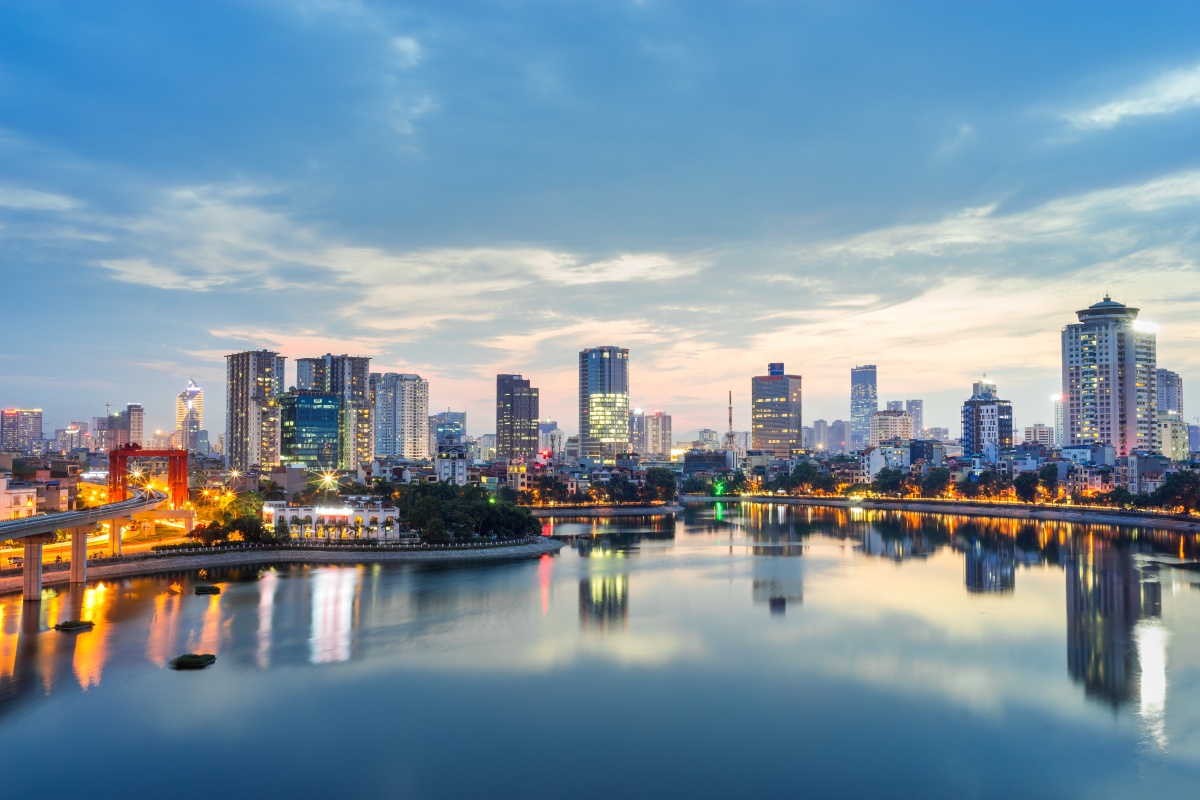
Urban areas like Hanoi are positioned to become a smart/tech city.
Why mobility matters
For the first time, Savills has measured ‘mobility’ as part of its Tech Cities ranking: with global urbanisation rising, a city’s ability to get people from A to B efficiently is rising in importance, says Savills. Even if a city has a good pool of tech talent, if employees cannot get to their workplace quickly and cheaply this will harm the prospects for tech occupiers, and the overall success of the city.
Our Tech Cities are among the fastest growing developed cities in the world. Across the 30 tech cities, GDP is forecast to rise by 36% in the next decade, against a rate of 19% across other developed centres. Measured by metro area, these 30 cities are home to 291 million people between them, and will add another 18 million inhabitants in the next 10 years.
Rising populations are putting ever greater pressure on existing infrastructure, posing a risk to city competitiveness. From mobility as a service to investment in ridesharing and autonomous vehicles, our Tech Cities are at the forefront of addressing this. Many of these cities benefit from an urban form that is conducive to cycling and walking, making sustainable modes of transport popular too.
We consider three elements when assessing mobility: the availability, density and investment in shared mobility services (car, bike and scooter sharing services), the scale and level of innovation in the city’s metro system, and the quality of urban infrastructure (walkability, cycle networks, congestion and air pollution).
The mobility sub rankings
Chinese cities have emerged as leaders in shared mobility services. Many of the dockless bikeshare schemes now found in cities across the world (such as Mobike) originated in China. Hangzhou is home to more shared bikes than in any other city globally. Numbers here topped 800,000, before they had to be culled to manage congestion.
Major Asian cities lead when it comes to metro systems. The large, modern systems benefit from onboard wifi and air conditioning and are among the cheapest to travel on.
The final pillar, urban infrastructure, looks at the quality of the urban environment. European cities compare favourably. Amsterdam, Copenhagen, Stockholm and Barcelona are among the world’s most cycle-friendly. Their compact size allows residents shorter commutes, easier access to amenities and a better work/life balance.
While not leading in any single category, taken together, London ranks first overall for mobility. The city’s public transport system offers smart ticketing (mobile, contactless, Oyster), integrated across all transport modes (from rail to bus). Existing congestion charging and a low emissions zone will be complemented with an ultra-low emissions zone this year. Pollution remains a major issue, however, while upgrading the world’s oldest metro system poses ongoing challenges.
Where is Vietnam?
Although Vietnam was not included in Savills Tech Cities 2019, we talked to our local experts for some insights to the mobility situation of Vietnam cities: Hanoi & HCMC. It is agreed that we have a long way to catch up with the global top 30.
Ms. Do Thi Thu Hang, Associate Director, Head of Research Savills Hanoi said: “Vietnam is missing two of the three elements of mobility: shared mobility services & metro system. Meanwhile, there remains room for improvement in the quality of urban infrastructure in Hanoi & HCMC. According to our spotlight research “Urban Transport” in 2017, road area in Hanoi & HCMC only accounted for under 9% of their urban area, lower than Shanghai, Seoul, Singapore & Tokyo (four cities included in Savills 30 tech cities) - where road allocation were all above 12%. Air pollution has also been a concerning issue for our two big cities,” said Ms. Hang.
Mr. Bui Trung Kien, Associate Director, Commercial Leasing, Savills Hanoi said: “Corporate occupiers are coping with limited urban mobility in Vietnam by looking for locations that offer the best connectivity. Hanoi central business district (CBD) used to be their first choice, but due to heavy traffic, travelling time from the city centre to the West has been increasing to around one hour. This, combined with increasing rents & limited supply of quality office spaces in CBD, has drawn tenants to non – CBD locations. Hanoi metro developments also prioritise access in Midtown & the West, creating connectivity advantages for office buildings in these areas. Another reason for occupiers to move out of CBD is that the largest number of employees (763,000) reside in the Secondary, followed by the West with 420,000 employees. This movement is reflected in the impressive growth of occupancy rate in Midtown, from 40% in 2015 to above 85% in 2018, and consistent occupancy in the West at above 93%.”
Looking forward, Ms. Hang believes that the gap between Vietnam and the top 30 global tech cities indicates learning opportunities for our cities. “As much as different tech cities could learn from each other, we could also learn from them how to improve our mobility & urban infrastructure, increase public transport usage, and reduce air pollution. This, combined with our advantages like tech talent pool, comparatively low real estate costs, large flow of inbound foreign investment, should raise the competitiveness of our cities in tech sector,” Ms. Hang said.

















